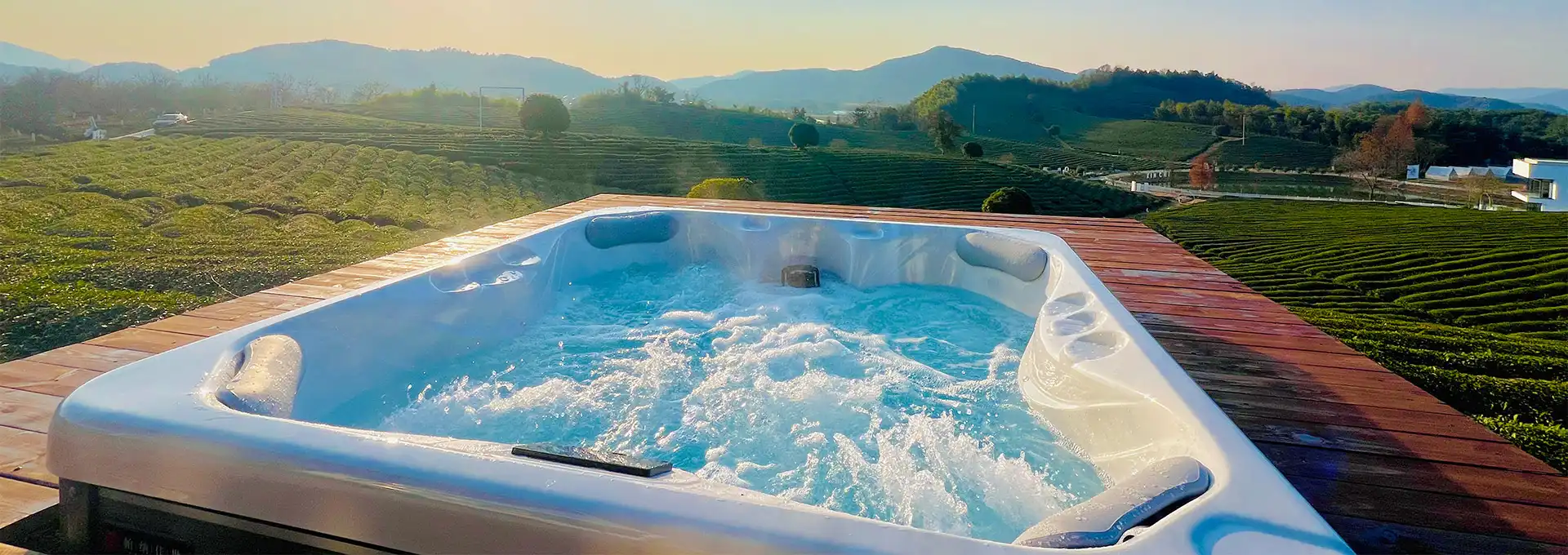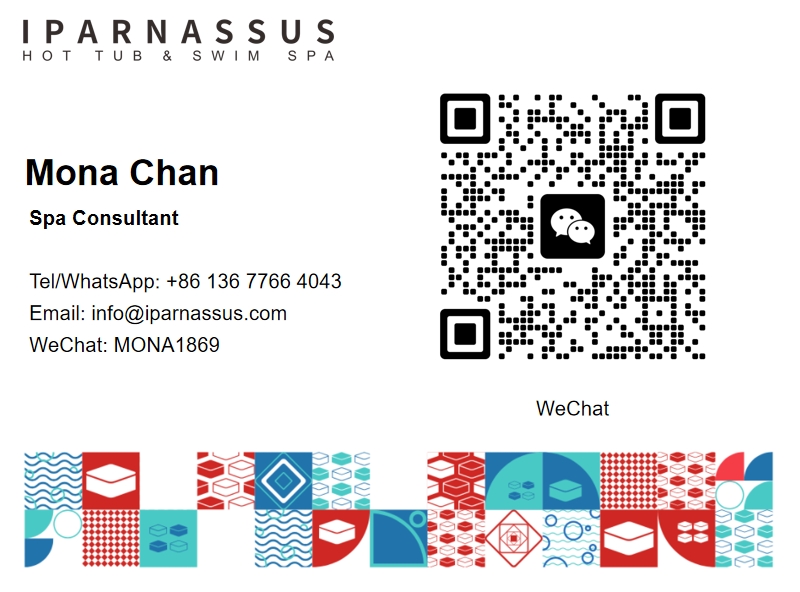Plunge Cold Tub vs. Traditional Ice Baths: Which is Better?
2025-07-24 15:46:45
The growing popularity of cold water therapy has led many athletes and wellness enthusiasts to debate between investing in a dedicated Plunge Cold Tub versus relying on traditional ice baths for their recovery needs. While both methods provide cold exposure therapy benefits, significant differences exist in terms of convenience, consistency, cost-effectiveness, and overall therapeutic outcomes. A Plunge Cold Tub offers advanced temperature control, filtration systems, and consistent cold exposure, whereas traditional ice baths require manual preparation and constant ice replenishment. Understanding these differences becomes crucial for individuals seeking to maximize their cold therapy investment while ensuring optimal recovery benefits. This comprehensive comparison examines the practical advantages, therapeutic effectiveness, and long-term value proposition of each approach to help determine which cold water immersion method best suits specific needs and circumstances.
What Are the Key Differences Between a Plunge Cold Tub and Ice Bath Setup?
Temperature Control and Consistency
The most significant advantage of a Plunge Cold Tub lies in its ability to maintain precise, consistent temperatures without the variables associated with traditional ice bath preparation. Cold plunges offer stable temperatures with built-in cooling systems, while ice baths require manual addition of ice to maintain temperature, creating unpredictable temperature fluctuations throughout the session. A Plunge Cold Tub utilizes sophisticated cooling technology that maintains water temperature within 1-2 degrees of the target setting, ensuring reliable therapeutic outcomes with every use. Traditional ice baths, on the other hand, experience constant temperature drift as ice melts, requiring continuous monitoring and ice replenishment to maintain desired cold exposure levels. This temperature instability can compromise the effectiveness of cold therapy protocols and make it difficult to establish consistent recovery routines. The precise temperature control offered by a Plunge Cold Tub eliminates guesswork and allows users to gradually adapt to colder temperatures through systematic progression.
Convenience and Preparation Requirements
The preparation and maintenance requirements between a Plunge Cold Tub and traditional ice baths represent a stark contrast in user convenience and time investment. You can create an ice bath by filling a bathtub halfway with cold water and then adding three large bags of commercial ice, requiring significant preparation time and ongoing ice procurement. A Plunge Cold Tub eliminates these preparatory steps, offering immediate access to cold therapy at the touch of a button. Traditional ice bath setups demand regular ice purchases, storage space for ice supplies, and time-consuming preparation before each session. Additionally, the cleanup process for ice baths involves draining water, disposing of melted ice, and thoroughly cleaning the bathtub or container. The cold plunge by far is the more convenient option because you never have to get ice to cool down your water and it has a filtration system built in that delays the need to clean your tub, making it significantly more practical for regular use.
Long-term Cost and Investment Analysis
While the initial investment in a Plunge Cold Tub appears substantial compared to ice bath setups, a comprehensive cost analysis reveals important considerations regarding long-term value and expense management. Traditional ice baths require ongoing ice purchases that can accumulate significant costs over time, particularly for individuals using cold therapy multiple times per week. The average cost of three bags of ice per session, multiplied by regular usage frequency, can approach or exceed the annual operating costs of a Plunge Cold Tub within the first year. Additionally, traditional ice baths may require more frequent water changes due to lack of filtration systems, increasing water costs and environmental impact. A Plunge Cold Tub represents a one-time investment that provides years of consistent cold therapy access without recurring ice expenses, making it increasingly cost-effective over time for dedicated users who prioritize regular cold exposure therapy.
How Does Water Quality Compare Between Plunge Cold Tub and Ice Bath Systems?
Filtration and Water Maintenance Systems
The water quality differences between a Plunge Cold Tub and traditional ice baths significantly impact both safety and therapeutic effectiveness of cold water immersion therapy. A Plunge Cold Tub incorporates advanced filtration systems that continuously circulate and purify water, removing bacteria, debris, and organic contaminants that could compromise user health or therapeutic outcomes. These integrated filtration systems typically include multiple stages of purification, including mechanical filtration, chemical sanitization, and sometimes UV sterilization, ensuring consistently clean water for every cold therapy session. Traditional ice baths lack these sophisticated purification systems, relying instead on frequent water changes to maintain acceptable hygiene standards. The stagnant water in ice baths can become breeding grounds for bacteria and other microorganisms, particularly when water is reused across multiple sessions. This limitation requires users to completely drain and refill ice baths more frequently, increasing water consumption and preparation time while potentially exposing users to contaminated water.
Hygiene and Sanitation Standards
The sanitation capabilities inherent in Plunge Cold Tub systems provide superior hygiene standards compared to traditional ice bath setups, particularly important for individuals prioritizing health and safety. A Plunge Cold Tub maintains water quality through automated chemical balancing, continuous filtration, and circulation systems that prevent bacterial growth and maintain optimal water conditions. These systems can be programmed to maintain specific sanitizer levels, monitor water chemistry, and alert users when maintenance is required. Traditional ice baths present hygiene challenges due to their temporary nature and lack of ongoing water treatment capabilities. Each ice bath session essentially creates a temporary water environment that cannot be effectively sanitized or maintained between uses. Users must rely on fresh water for each session or risk exposure to potentially harmful microorganisms that can proliferate in untreated standing water. The superior hygiene standards of a Plunge Cold Tub make it particularly suitable for households with multiple users or individuals with compromised immune systems.
Water Chemistry and Therapeutic Effectiveness
The water chemistry maintained by a Plunge Cold Tub versus traditional ice baths can influence the therapeutic effectiveness and user experience of cold water immersion therapy. A Plunge Cold Tub allows for precise water chemistry management, including pH balance, mineral content, and sanitizer levels that can be optimized for comfort and therapeutic benefit. Properly balanced water chemistry reduces skin irritation, prevents equipment corrosion, and creates a more pleasant cold therapy experience that encourages consistent use. The controlled environment of a Plunge Cold Tub also prevents contamination from external sources, ensuring that water quality remains consistent throughout extended use periods. Traditional ice baths offer no control over water chemistry beyond the initial water source, and the addition of ice can introduce impurities or alter mineral content unpredictably. Tap water used in ice baths may contain chlorine, minerals, or other substances that could cause skin irritation or reduce the therapeutic effectiveness of cold exposure therapy, particularly for individuals with sensitive skin or specific health conditions.
Is a Plunge Cold Tub More Cost-Effective Than Regular Ice Bath Sessions?
Initial Investment vs. Operating Costs Analysis
The cost-effectiveness comparison between a Plunge Cold Tub and regular ice bath sessions requires careful analysis of initial investment against long-term operating expenses and usage patterns. If you plan on taking consistent ice baths, this is by far the ideal option, even though it's costly up front, highlighting the importance of considering long-term value for regular users. A Plunge Cold Tub typically requires a significant upfront investment ranging from several thousand to tens of thousands of dollars, depending on size and features. However, this one-time expense eliminates ongoing ice costs, reduces water consumption through filtration systems, and minimizes time investment for each cold therapy session. Regular ice bath sessions accumulate costs through ice purchases, increased water usage from frequent refills, and potential bathtub wear from repeated temperature cycling. For individuals using cold therapy 3-4 times per week, ice costs alone can reach hundreds of dollars annually, making the economic case for a Plunge Cold Tub more compelling over time.
Time Value and Convenience Economics
The economic analysis of a Plunge Cold Tub versus ice baths must include the often-overlooked factor of time value and convenience costs associated with each approach. Traditional ice bath preparation requires 15-30 minutes per session for setup, ice procurement, temperature adjustment, and cleanup activities. For busy professionals or athletes with demanding schedules, this time investment represents a significant opportunity cost that may discourage consistent cold therapy practice. A Plunge Cold Tub eliminates virtually all preparation time, allowing users to begin cold therapy sessions immediately and return to other activities without extensive cleanup requirements. The convenience factor also influences adherence to cold therapy protocols, as the reduced barriers to entry provided by a Plunge Cold Tub encourage more consistent usage patterns. This improved consistency can translate to better therapeutic outcomes and increased return on investment through enhanced recovery benefits and performance improvements.
Long-term Value and Equipment Durability
The long-term value proposition of a Plunge Cold Tub extends beyond immediate cost comparisons to include equipment durability, maintenance requirements, and technological advancement benefits. Quality Plunge Cold Tub systems are designed for years of regular use with minimal maintenance requirements, often including warranties and customer support that protect the initial investment. The robust construction and specialized components ensure reliable operation and consistent performance over extended periods. Traditional ice bath setups, while initially less expensive, may require frequent replacement of containers, additional bathroom wear from temperature cycling, and ongoing costs associated with ice procurement and storage. The technological features integrated into Plunge Cold Tub systems, such as smartphone connectivity, programmable settings, and automated maintenance alerts, provide additional value through enhanced user experience and optimized therapeutic protocols. These advanced features contribute to better outcomes and increased user satisfaction, factors that enhance the overall value proposition for individuals committed to regular cold therapy practice.
Conclusion
The comparison between Plunge Cold Tub systems and traditional ice baths reveals clear advantages for dedicated cold therapy users seeking consistency, convenience, and long-term value. While ice baths offer affordability for occasional use, Plunge Cold Tub systems provide superior temperature control, water quality, and cost-effectiveness for regular practitioners, making them the preferred choice for serious recovery protocols.
Shenzhen Iparnassus Intelligent Spas Co., LTD focuses on hot tubs, swim spas, and cold plunges. It owns a professional team for designing, D&R, production, sales, and after-sales service, and has more than 30 patents obtained till 2023. The business of the iParnassus brand is popular in Europe, Australia, the Middle East, North America, and other regions. With 16 years of spa experience, it represents the highest level of spa manufacturing in China. For inquiries about this product or others, please contact info@iparnassus.com for dedicated service.
References
1. Machado, A. F., et al. (2016). Can water temperature and immersion time influence the effect of cold water immersion on muscle soreness? A systematic review and meta-analysis. Sports Medicine, 46(4), 503-514.
2. White, G. E., & Wells, G. D. (2013). Cold-water immersion and other forms of cryotherapy: physiological changes potentially affecting recovery from high-intensity exercise. Extreme Physiology & Medicine, 2(1), 26.
3. Versey, N. G., Halson, S. L., & Dawson, B. T. (2013). Water immersion recovery for athletes: effect on exercise performance and practical recommendations. Sports Medicine, 43(11), 1101-1130.
4. Bleakley, C., et al. (2012). Cold-water immersion (cryotherapy) for preventing and treating muscle soreness after exercise. Cochrane Database of Systematic Reviews, 2, CD008262.
5. Roberts, L. A., et al. (2015). Post-exercise cold water immersion attenuates acute anabolic signalling and long-term adaptations in muscle to strength training. Journal of Physiology, 593(18), 4285-4301.
6. Poppendieck, W., et al. (2013). Cooling and performance recovery of trained athletes: a meta-analytical review. International Journal of Sports Physiology and Performance, 8(3), 227-242.



